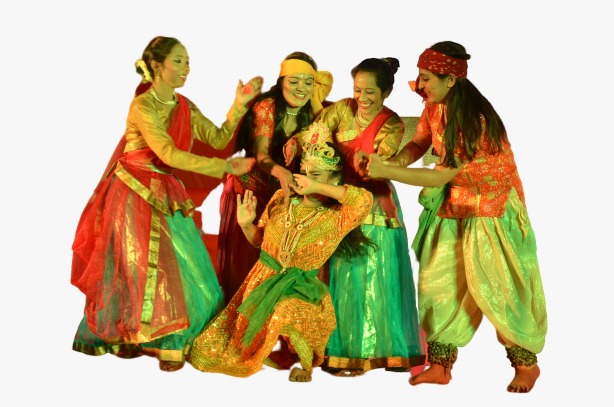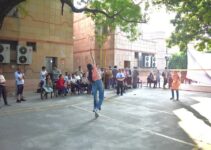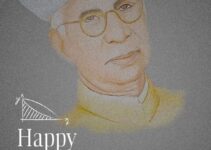Co-curricular activities facilitate the development of various domains of mind and personality, such as intellectual, emotional, social, moral, and aesthetic. Creativity, Enthusiasm, and Energetic, Positive thinking are some facets of personality development and the outcomes of Extracurricular activities.

Meaning of Co-curricular Activities
Co-curricular activities (CCAs), earlier known as Extracurricular Activities (ECA), are the components of the non-academic curriculum that helps to develop various facets of the child’s and student’s personality development. For the child’s all-round development, there is a need for emotional, physical, spiritual, and moral development that is complemented and supplemented by Co-curricular Activities.
Definition of Co-curricular Activities
Co-curricular Activities are defined as the activities that enable to supplement and complement the curricular or main syllabi activities. These are essential for educational institutions to develop the student’s personality and strengthen classroom learning.
These activities are organised after school hours, known as extra-curricular activities. Co-curricular Activities have a broad horizon to cater to the child’s cultural, social, and aesthetic development.
Examples and Types of Co-curricular Activities
- Sports
- Musical activities
- Debate
- Model
- Art
- Music
- Drama
- Debate and discussion
- Declamation contest
- Story writing competition
- Essay writing competition
- Art craft
- Recitation competition
- Wall magazine decoration
- Writes ups for school magazine
- Folk songs
- Folk dance
- Flower show
- School decoration
- Sculpture making
- Fancy dress competition
- Preparation of chart & models
- Album making
- Photography
- Clay modeling
- Toymaking
- Soap making
- Basket making
- Organization exhibitions.
- Celebration of festival
Role of co-curricular activities in a student’s life
Co-curricular activities are the authentic and practical experiences received by students. It helps students make careers in Economics, Commerce, Mathematics, Accountancy, Nutrition, etc. To a greater extent, theoretical knowledge gets strengthened when a relevant co-curricular activity related to the content taught in the classroom is organised. The Classroom solely accomplishes intellectual aspects of personality, while aesthetic development, character building, spiritual growth, physical growth, moral values, creativity, etc., are supported by co-curricular activities. It helps to develop coordination, adjustment, speech fluency, extempore expressions, etc., among students at the school and college levels. If you are good in Co-curricular activities, the subjects like Commerce and Economics can be handled easily. Also Read: Career in Commerce.
Importance and Benefits of Co-curricular Activities
- Co-curricular activities stimulate playing, acting, singing, recitation, speaking, and narrating in students.
- Activities like participation in game debates, music, drama, etc., help achieve the overall functioning of education.
- It enables the students to express themselves freely through debates.
- Games and Sports help the child be fit and energetic.
- It helps to develop the spirit of healthy competition.
- These activities guide students on how to organise and present an activity, develop skills, and co-operate and coordinate in different situations- all these help in leadership qualities.
- It provides avenues of socialisation, self-identification, and self-assessment when the child comes in contact with organisers, fellow participants, teachers, and people outside the school during cultural activity.
- Inculcate the values to respect other’s views and feelings.
- It makes you perfect in decision-making.
- It develops a sense of belongingness.
- CCA motivates learning.
- CCA develop values like physical, psychological, Ethical, academic, civic, social, aesthetic, cultural recreational, and disciplinary values
Also Read: Career in Modeling
Role of a Teacher in Organising curricular Activities
- The teacher must be a good planner so that the different activities can be carried out systematically throughout the year.
- It should be the teacher’s duty to give the child more opportunities while performing co-curricular activities.
- The Teacher should act as an Innovator by introducing innovative programs.
- The teacher must be a good organiser so that the students experience a maximum of it.
- He should act like a director, recorder, evaluator, manager, decision-maker, advisor, motivator, communicator, and coordinator so that the student and child can gain a maximum of finer aspects of Co-curricular activities.
Read: 10 facts about teachers.
List of Outdoor Co-curricular Activities
- Mass parade
- Mass drill
- Yoga
- Athletics
- Bicycling
- Gardening
- Cricket
- Football
- Basketball
- Volleyball
- Kabaddi
- Kho kho
- Handball
- Trips to the place of geographical, historical, economic, or cultural interest
- Mass prayer
- Morning assembly
- Excursions
- Social service in the neighbourhood
- Village Survey
List of Indoor Co-curricular Activities
- Dramatics
- Music and dance
- Drawing and painting
- Decoration
- Weaving
- Clay modeling
- First Aid
- Tailoring
- Rangoli
- Bookbinding
- Cardboard work
- Leatherwork
- Organizing school panchayat
- Student self-government
- Art and craft




Ultimate Gyaan,,that I was looking for 🙂 Good article.
In article definition is given as –
“These activities are organized after the school hours, so known as extra-curricular activities.”
Most of the schools in their class time table include subjects like physical education, art, work experience.
Could we consider these subjects as Co curricular subjects?
yes all these activities are conducted after classes or in free period
Yes
Yaa! According to me we cannot say Co-curricular activity are organised after the school hours … Because nowadays every schools are conducting different activities as their subjects . They consider an important part of their curriculum. Therefore we can define Co-curricular activities “All those extra activities which are other than academic education and helps in the overall development of a child”.
When is this article published? Thanks!
Role of a Teacher in Organising curricular Activities
1.The teacher must be a good planner so that the different activities could be carried out systematically throughout the year.
2.It should be the duty of the teacher to give more and more opportunity to the child while performing co-curricular activities.
3.The Teacher should act as Innovator by introducing some innovative programmes.
4.The teacher must be a good organiser so that the students experienced maximum of it.
5.He should too act like as director, recorder, evaluator, manager, decision maker, advisor, motivator, communicator, coordinator, so that the student and child could gained maximum of finer aspects of Co-curricular activities
Its quite useful.Thank you for your valuable information that solved by dilemma.
Students enjoy it; parents like it; schools promote it, however not all activities are equal or balanced in relation to a teacher’s workload. Many activities take place on a weekend where teaching staff are required to work some of or all of a Saturday. Travelling time varies but could be 2 – 3 or more hours. Consider travelling from Sydney to Orange. I would like to read a discussion surrounding the potential impact this form of activity could have/does have on the families of teachers.
AJF
itx really helful for me thnx 🙂
It is good and clear article
I want to know more about cca
really very helpful piece of information.thanku so much 4 expaining in detail
thanks you for the explanation now im on limelight about importance and benefits of co-curricula activities to students
As being a CCA Director in a renowned school, it has been a very useful article for me and has benefited for the students and the school itself.
Thank you very much.
As a student of curriculum development, this artical has been of tremendous value to me.
Really a clarifying article.
Sir it it is nice. I also follow cca curricular activities in our school jai Bharati public school grastanganj
Awesome article which I was searching for my debate………really helpful
Its really wholesome…!!keep up the good work…
Good work….. Though there should a difference between venues/avenues of co-curricular activities and the activities themselves
Very informative
Made my assignment 🙂
Educating and information given,now I can plan for my students as a teacher.Thank you.
Is Pageant (Mr. and Ms. Elementary School for example) also included in the co-curricular acrivities?
YES
Really it cleared the concepts of curricular and co curricular activities, it is very useful article
Thanks for the clarity in the article.
In article definition is given as –
“These activities are organized after the school hours, so known as extra-curricular activities.”
Most of the schools in their class time table include subjects like physical education, art, work experience.
Could we consider these subjects as Co curricular subjects?
Of course.
That is one of the definitions. There are so many definitions have been suggested by various authentic books.
Sir, u have rightly well explained.
Can I use this article for my project work…or should I add a little bit more???
its most helpful for all student to think about what is co-curricular activities and on the other hand teachers,how to perform these activity for some ways
Please share content of co-curricular activities in school management…..
I have a question and i really don’t know how i solve it please help me to solve it….
And question is
How do different games assist in the sound development of an individual of an individual?
It’s good and useful .
Giving good information
Thank you
Thank for giving more knowledge
who is the author of this? when was it published?
Tanvi
I found Co-curricular Activities: Meaning, Definition, Examples, Importance,
Benefits very educational.
Could you please explain giving examples 3 procedures that a teacher could follow through co-curricular activities???
Informative and understandable
Wonderful article! We are linking to this particularly great article on our website.
Keep up the good writing.
Can i note this my assignments presentation
Okay by giving the reference of the website.
Nicely done and written my friend.
Continue the excellent work!
Cheers,
Darb
salute u for exhaustive information.
perfect
Nice article I must say but The definition of co-curricular seems to be suggesing that of extracurricular. Co curricular activities is supposed to complement curricular activities which is carried out within school hours while extra curricular activities are done outside the school hours and are not related to curricular .But they benefit the students individually even though it is not related to the curriculum.